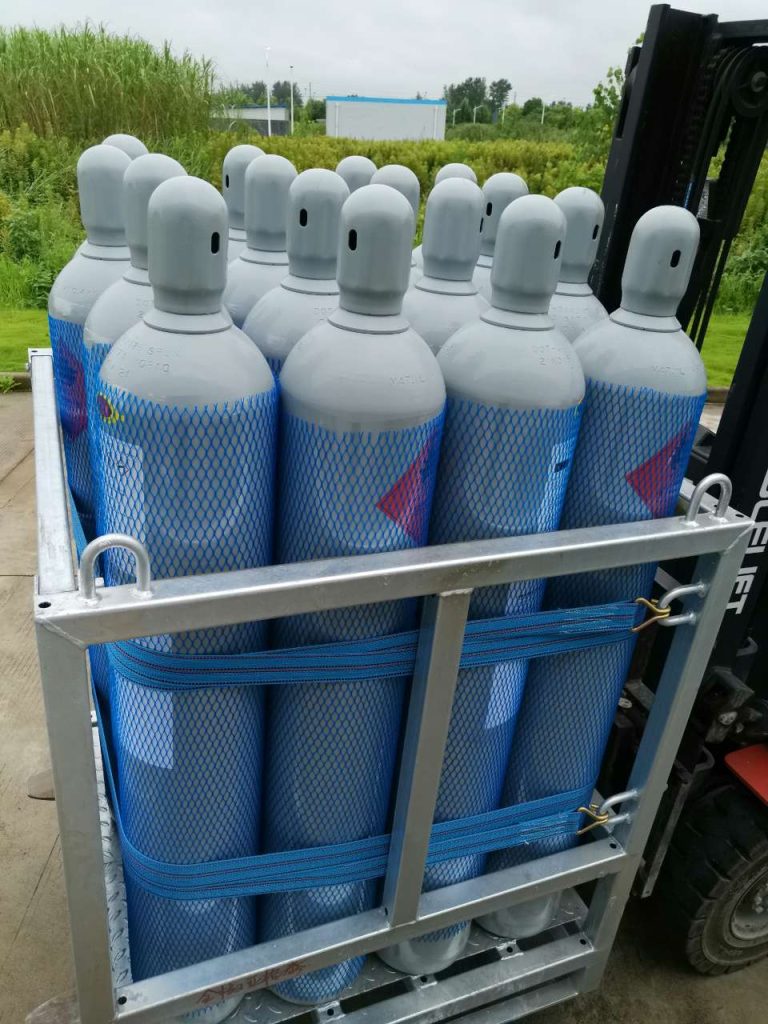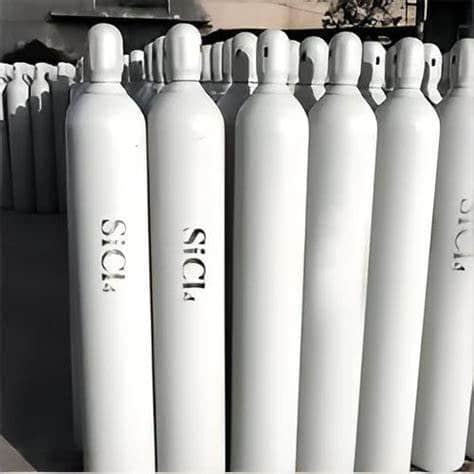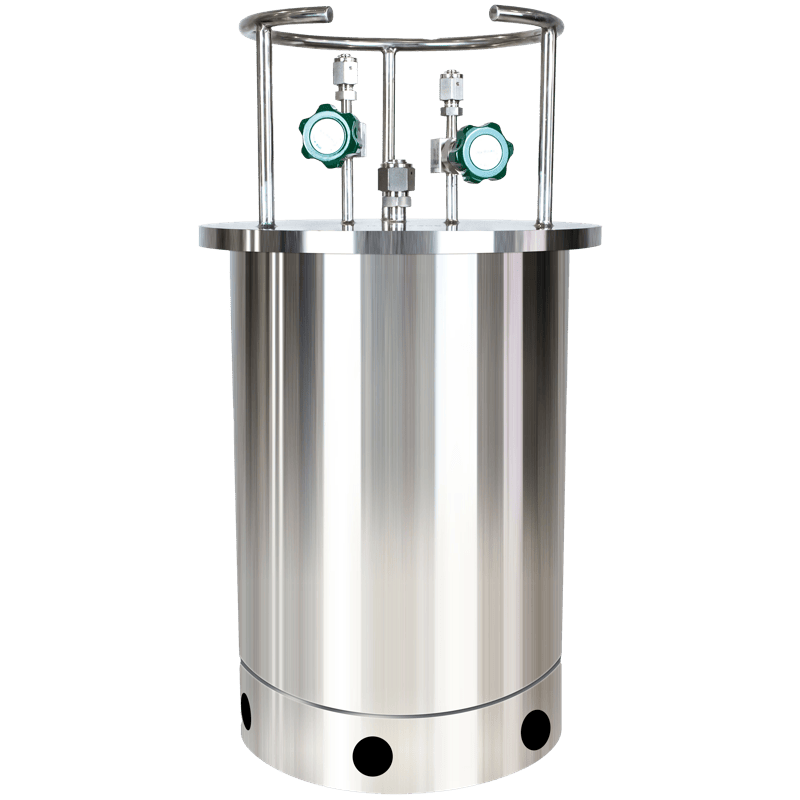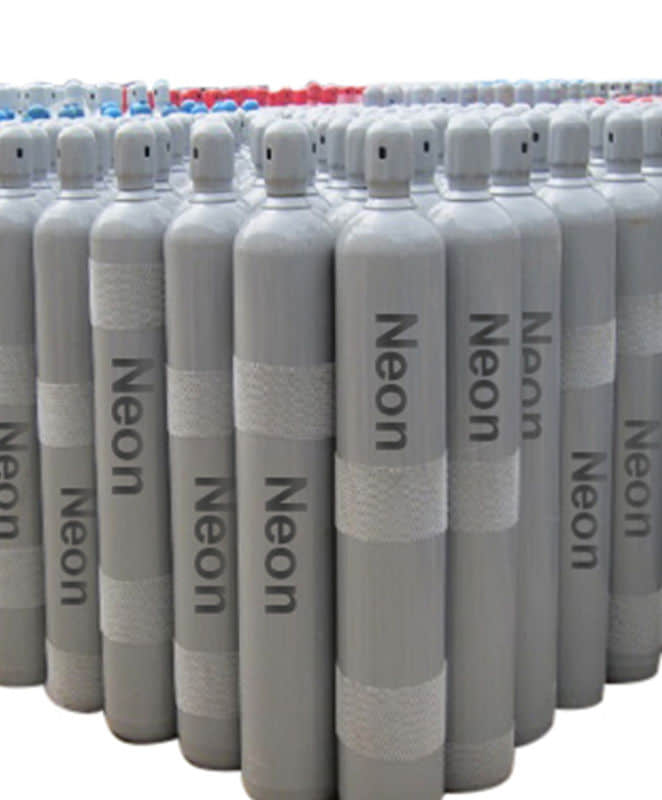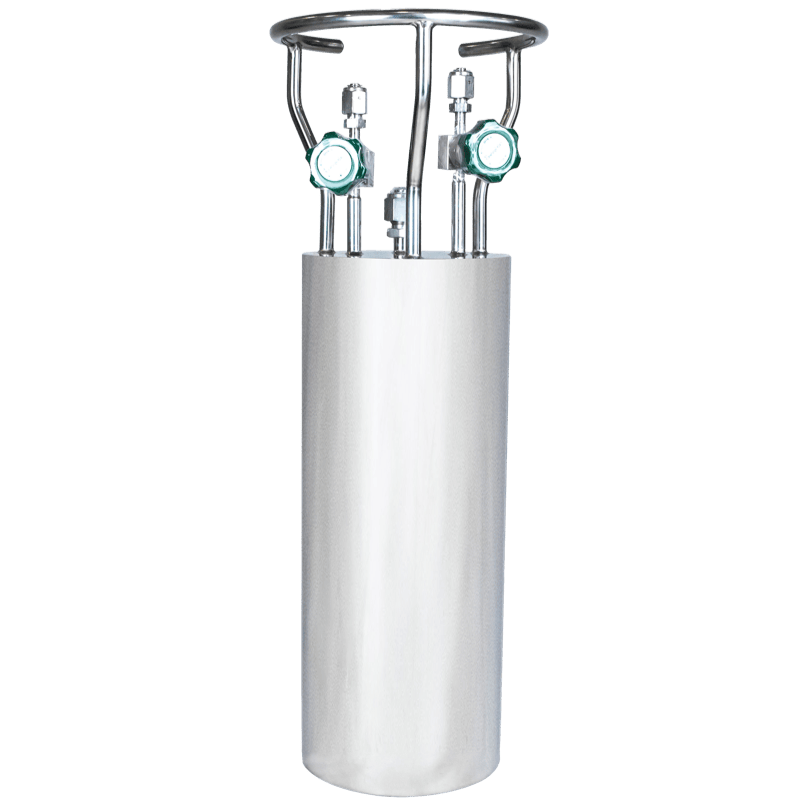Germane is an inorganic compound with the chemical formula GeH4. It is a colorless gas at room temperature and pressure, stable at room temperature. It begins to decompose at around 280 ℃ and almost completely decomposes into elements Ge and H2 at around 350 ℃. It can burn in the air and emit a blue red flame during combustion, but the degree of combustion is not as intense as that of silane. Mixtures with oxygen or air are prone to explosion. React with alkali metals in liquid ammonia at room temperature. Germanide has strong self catalytic activity, and once it decomposes to form a metal coating, it will rapidly decompose. Therefore, the surface of materials such as piping must be smooth. Insoluble in water, but soluble in hypochlorous acid, slightly soluble in hot concentrated sulfuric acid. Can be decomposed by nitric acid. Can be used to produce high-purity germanium.
Chemical formula GeH4
Molecular weight 76.672
CAS login number 7782-65-2
EINECS login number 231-961-6
Melting point -165 ℃
Boiling point -91 to -90 ℃
Water soluble and insoluble
Appearance colorless gas
Application preparation of high-purity germanium semiconductors
Safety description S16; S24; S26; S36/37/39; S45
Hazard symbol T+; F+
Hazard description R12; R17; R21/22; R23; R26
UN dangerous goods number 2192
The product specifications we can provide,
1, Pure gas with purity of 99.999%
2, Gas mixture, the commonly used mixing standards include 1% -20% GeH4 gas mixture, and balance gases include He, Ar, and H2.
Unlike silane, germanane does not self ignite in air. GeH4 can mix with air without undergoing chemical changes, and is gradually oxidized when heated to 160 ℃ -183 ℃ (it needs to be heated to 320 ℃ under low pressure to react). GeH4 decomposes into germanium and hydrogen at approximately 280 ℃, and rapidly at 375 ℃.
The reaction between germanane and excess oxygen proceeds as follows: GeH4+2O2 → GeO2+2H2O
Germanium and silane are both strong reducing agents, for example, GeH4 can react with silver nitrate aqueous solution to release hydrogen gas and precipitate a black mixture of germanium and silver. Silane rapidly hydrolyzes in dilute alkaline solution, while GeH4 not only does not react with dilute alkaline solution, but also does not hydrolyze in 33% NaOH solution and 1mol/L HBr solution.
The liquid ammonia solution of germanane has conductivity due to its ionization in liquid ammonia: GeH4+NH3 → NH4++GeH3-. Therefore, germanane reacts with sodium or potassium in liquid ammonia to produce white solid NaGeH3 and KGeH3, respectively. Both substances are unstable at room temperature.
Methylgermanane decomposes into germanium and hydrogen at higher temperatures. This type of thermal instability is used in the semiconductor industry, namely the Organic Metal Chemical Vapor Deposition (MOVPE) method. Due to the high toxicity of methylgermanane, certain organic germanium compounds (such as isobutyl germanium) can replace methylgermanane and be used in MOVPE.
Used for producing high-purity germanium
Germanide, as one of the important sources of high-purity elemental germanium, is mainly used in semiconductors, infrared technology, and other fields. The preparation of elemental germanium using germanane has the following advantages: germanane decomposition occurs at lower temperatures and has high production capacity and yield. The original compounds and reaction products have lower reaction capacity and do not require additional reagents.
Before the 1960s, germanium was widely used as an important semiconductor material, with over 95% of germanium used in the manufacturing of semiconductor devices. However, due to the rise of silicon materials, the usage of germanium in the semiconductor field plummeted. However, germanium devices have advantages that cannot be compared to other devices. Germanium has very small saturation resistance, almost no thermal radiation, and extremely low power consumption. Infrared optics is one of the fields that consume the most germanium, and the United States and Japan have always used germanium as a strategic reserve material for military purposes. In addition, germanium still maintains a certain level of consumption in fields such as optical fibers, catalysts, pharmaceuticals, and food, and is also used in resistance thermometers. Therefore, even if silicon materials are widely used, the production of germanium is essential, and the germanane decomposition method is one of the best methods for producing high-purity germanium.
Used for solar cells
Germanide is mainly used in the electronic industry for metal organic compound vapor deposition (MOCVD) processes. As an important precursor gas for solar cells, germanane is mainly used to make intermediate layers of amorphous silicon germanium alloys with medium bandgap containing germanium that absorb green light, and bottom layers of amorphous silicon germanium alloys with narrow bandgap containing higher germanium content that absorb red light. After doping germanium elements into amorphous or microcrystalline silicon thin film materials, the silicon germanium thin film material can significantly adjust the material’s movement towards the narrow bandgap direction, thereby improving the spectral response range and light absorption efficiency of silicon-based thin film solar cells, and ultimately improving the conversion efficiency of silicon-based thin film solar cells.
Used for preparing heterojunction bipolar transistors
Germanide serves as a precursor for silicon germanium (Si Ge) films. Mainly used for manufacturing electronic devices, such as integrated circuits, optoelectronic devices, especially for preparing heterojunction bipolar transistors. In heterojunction bipolar transistors (HBTs), a thin silicon germanium layer is grown on a silicon wafer as the substrate of the bipolar transistor. Compared with traditional silicon bipolar transistors, silicon germanium HBTs have significant advantages in speed, response frequency, and gain. Their speed and frequency response can be compared to more expensive gallium arsenic HBTs.
Other uses
Germanide is also used in epitaxial processes in the production of semiconductor components for digital camera equipment (CMOS), wireless networks, and 3G communication equipment above 90nm. In addition, germananes are also widely used in processes such as diffusion and ion implantation.

